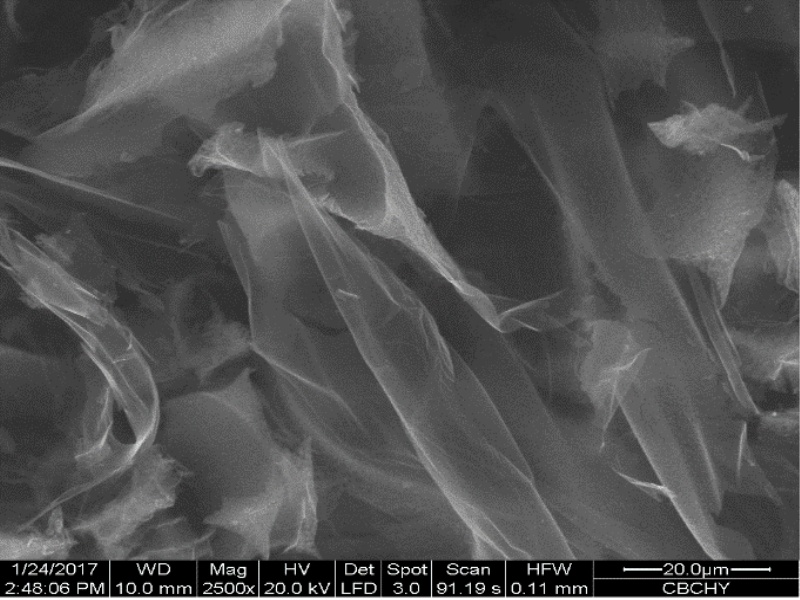NANOSYSTEMS: PHYSICS, CHEMISTRY, MATHEMATICS, 2018, 9 (1), P. 125–128
Facile synthesis of 2D carbon structures as a filler for polymer composites
A. P. Voznyakovskii – S.V. Lebedev Research Institute of Synthetic Rubber, St. Petersburg, Russia; voznap@mail.ru
A.Yu. Neverovskaya – S.V. Lebedev Research Institute of Synthetic Rubber, St. Petersburg, Russia; annaneverovskaya@yandex.ru
Ja. A. Otvalko – S.V. Lebedev Research Institute of Synthetic Rubber, St. Petersburg, Russia
E.V. Gorelova – S.V. Lebedev Research Institute of Synthetic Rubber, St. Petersburg, Russia
A. N. Zabelina – S.V. Lebedev Research Institute of Synthetic Rubber, St. Petersburg, Russia
The method of self-propagating high-temperature synthesis has been employed to prepare 2D graphene structures (SHS-graphSHS procedure for carbonizing cyclic organic structures is a simple accessible method for making 2D graphene structures in practically needed amounts. The material obtained is designated as SHS-graphene. The study on starch carbonization product by combined complementary methods has shown the structure of SHS-graphene particles is similar to 2–3-layered graphene particles. The addition of graphene to NBR matrix results in the significant (to twice) enhancement of strength and thermal characteristics of composition material obtained, as compared to unfilled rubber.ene). A set of complementary methods (scanning electron microscopy, Raman microscopy, X-ray diffraction analysis) evidenced 2–3-layer graphene structure of the substance obtained. SHS-graphene has been utilized to modify NBR and thereby markedly strengthen the polymer matrix.
Keywords: graphene, nitrile-butadiene rubber, self-propagating high-temperature synthesis.
PACS 61.48Gh
DOI 10.17586/2220-8054-2018-9-1-125-128
